9 Local Chicken Dishes You Might Come Across While Traveling
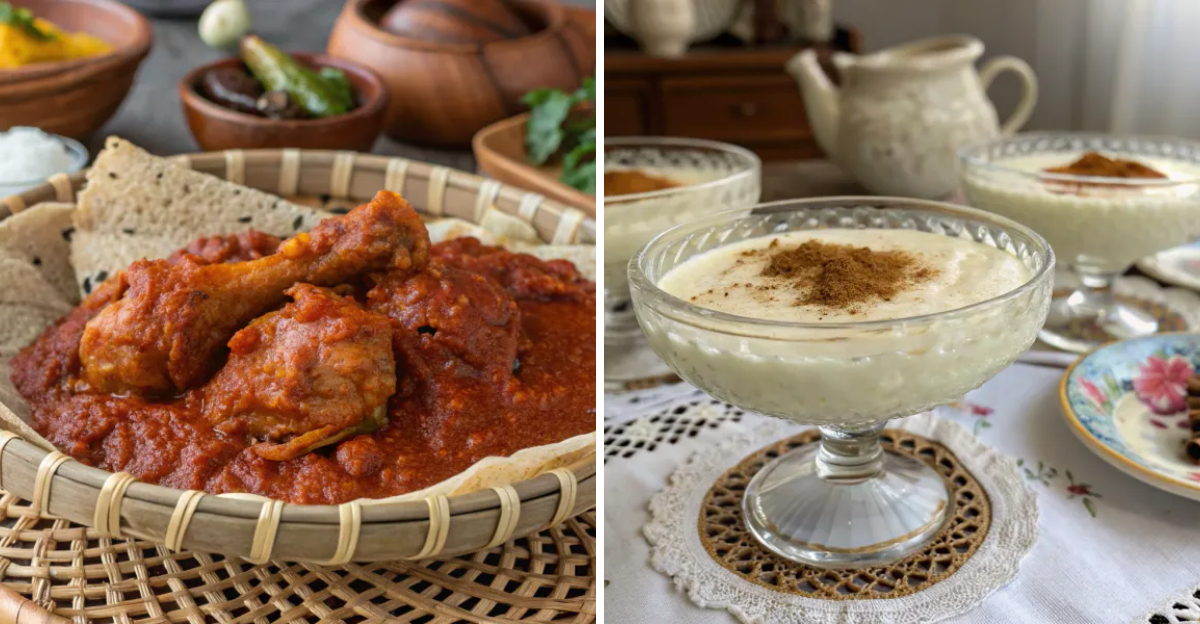
Chicken takes center stage on dinner tables around the globe, with each country presenting its own distinctive way of celebrating this cherished protein. From the bold, spicy stews of Ethiopia to the sweet and savory delicacies of Turkey, chicken dishes enchant even the most seasoned travelers. These time-honored recipes serve as a window into the culture, history, and local ingredients of diverse regions.
1. Chicken Inasal from the Philippines

Smoky charcoal flames give this Filipino grilled chicken its signature flavor and golden color. The marinade combines calamansi juice, coconut oil, and annatto seeds for a tangy taste that soaks deep into the meat.
Street vendors in Bacolod City first made this dish popular in the 1980s. They serve it with steamed rice, allowing diners to mix the juices with their meal. The cooking process takes patience as the chicken slowly roasts over hot coals. Each piece gets brushed with marinade while cooking to keep the meat moist and flavorful throughout.
2. Hainanese Chicken Rice from Singapore
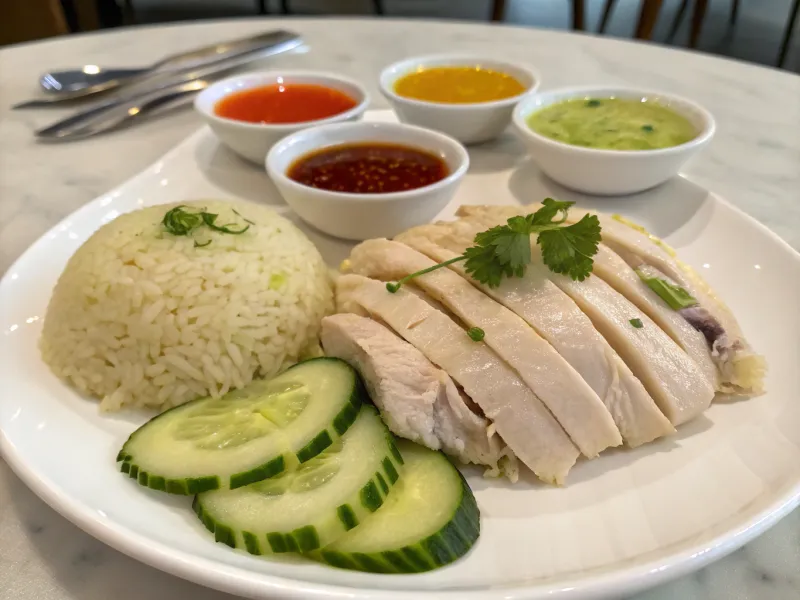
Silky smooth chicken combines fragrant rice in this Singaporean comfort food. The chicken gets poached gently in seasoned broth until tender, while the rice cooks in the same flavorful liquid. Chinese immigrants from Hainan island brought this recipe to Singapore decades ago. They adapted it using local ingredients and cooking methods that suited the tropical climate. The dish comes with three different sauces: chili sauce, ginger paste, and dark soy sauce. Each sauce adds a different layer of flavor to complement the mild chicken and aromatic rice.
3. Jerk Chicken from Jamaica
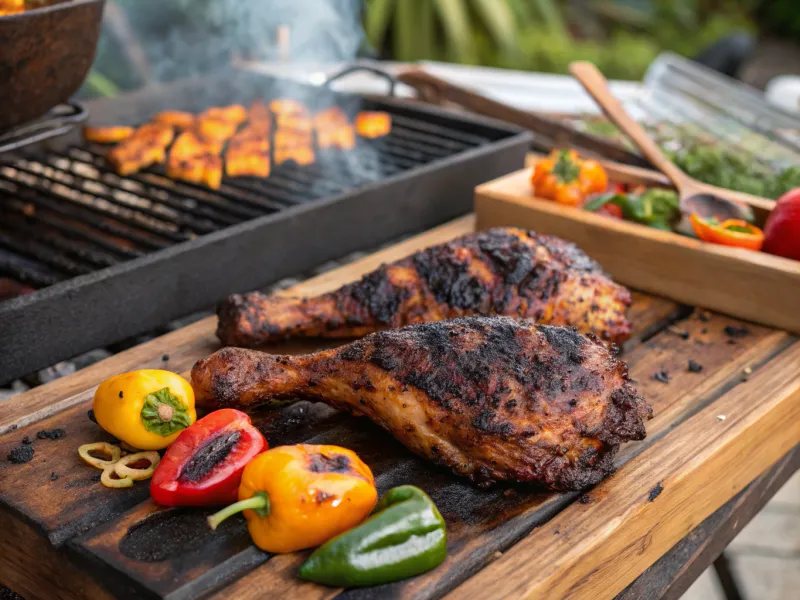
Fire and spice combine in this Caribbean classic. The marinade blends scotch bonnet peppers, allspice, and thyme to coat chicken pieces before they hit the grill. Jamaican cooks traditionally use pimento wood for grilling, which adds a sweet smoky flavor to the meat. The cooking method dates back centuries to when indigenous people preserved meat with local spices. Each region of Jamaica has its own jerk seasoning blend, passed down through families. The chicken emerges from the grill with a dark, crusty exterior that locks in juicy, spiced meat underneath.
4. Doro Wat from Ethiopia
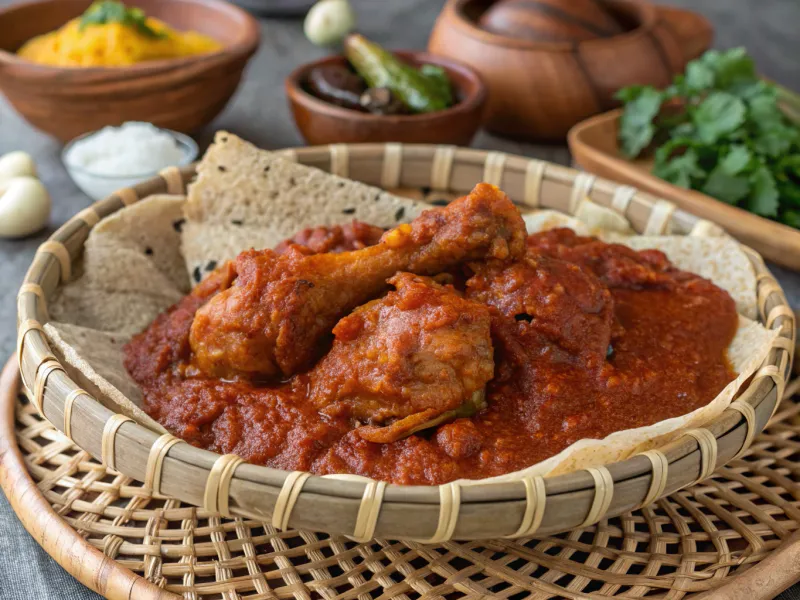
Red berbere spice paste changes ordinary chicken into Ethiopia’s national dish, adding a hearty stew that comforts and nourishes. The chicken simmers slowly with onions, garlic, and ginger until it falls off the bone. Ethiopian families often prepare this dish for important gatherings. The cooking process can take several hours as the flavors blend and develop their complex taste. Injera bread serves as both plate and utensil for eating doro wat. Diners tear off pieces of the spongy flatbread to scoop up the stew, making every meal a hands-on experience that brings people together.
5. Tavuk Göğsü from Turkey

Chicken breast hiding in a creamy dessert might sound strange, but this Turkish treat has interested sweet lovers for centuries. The shredded chicken becomes so fine that it blends invisibly into the milk pudding. Ottoman palace chefs first created this dessert to impress royal guests with an unexpected ingredient. The chicken adds texture and richness without any meaty flavor, adding a smooth, luxurious consistency. Modern Turkish restaurants still serve tavuk göğsü as a traditional addition to meals. The pudding gets topped with cinnamon and sometimes nuts, making it a conversation starter for initial tasters with its unusual preparation method.
6. Pollo a la Brasa from Peru
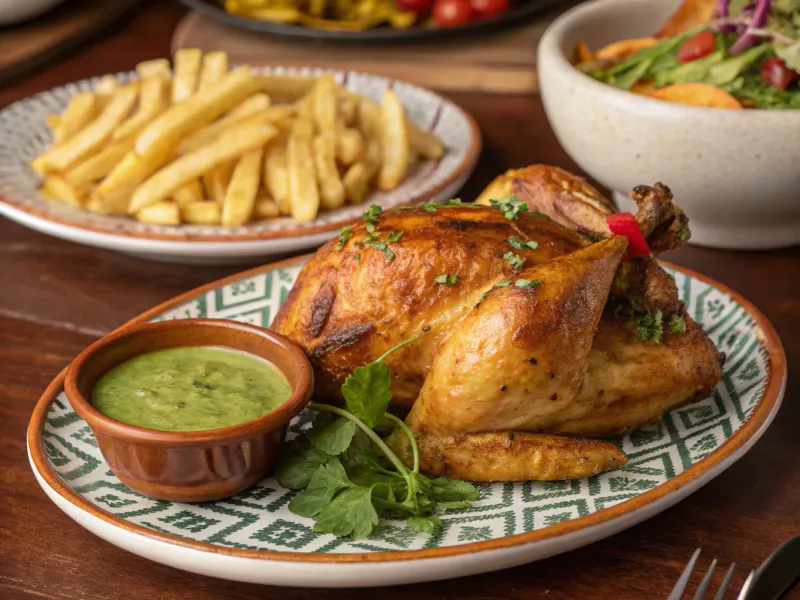
Rotisserie flames slowly roast marinated chicken until the skin turns crispy and golden brown. The marinade includes soy sauce, cumin, and paprika, giving the meat a distinctive Peruvian flavor profile. Swiss immigrants in Lima first introduced this cooking method in the 1950s. Peruvian cooks adapted the recipe by adding local spices and serving it with traditional green aji sauce. The chicken spins continuously on the rotisserie, allowing the juices to distribute evenly throughout the meat. Restaurants serve it with crispy french fries and creamy coleslaw, making it a complete meal that satisfies hungry families.
7. Chicken Gyros from Greece
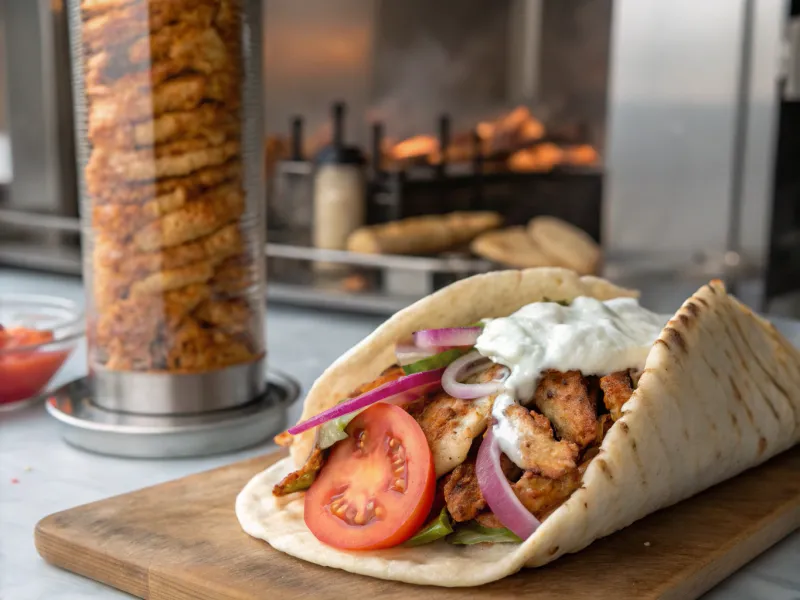
Vertical spits of seasoned chicken rotate slowly next to open flames, crafting layers of flavor as the exterior cooks to an ideal texture. Greek cooks slice the meat directly from the rotating spit when customers order. The chicken gets marinated in olive oil, lemon juice, and Mediterranean herbs before being stacked on the vertical rotisserie. This cooking method keeps the meat moist while developing a flavorful outer crust. Warm pita bread wraps around the sliced chicken along with tomatoes, onions, and creamy tzatziki sauce. The combination of textures and flavors makes gyros a popular street food that tourists and locals enjoy throughout Greece.
8. Xiang Ji Pai from Taiwan
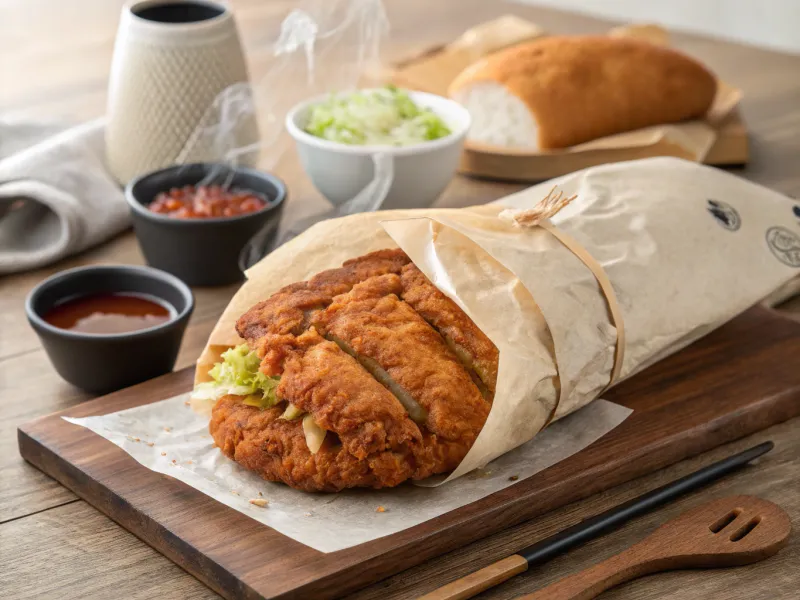
Night markets across Taiwan sizzle with the sound of chicken cutlets frying in hot oil. The chicken gets pounded thin, coated in sweet potato starch, and seasoned with five-spice powder before hitting the fryer. Taiwanese street vendors developed this dish to create an affordable snack that people could eat while walking through busy markets. The large, crispy cutlet often extends beyond the edges of its paper wrapper. Sweet potato starch adds a lighter, crispier coating than regular flour, making pieces crunchy. Vendors serve it hot with a sprinkle of seasoning salt, creating a handheld snack that has become synonymous with Taiwanese street food culture.
9. Chicken Adobo from the Philippines
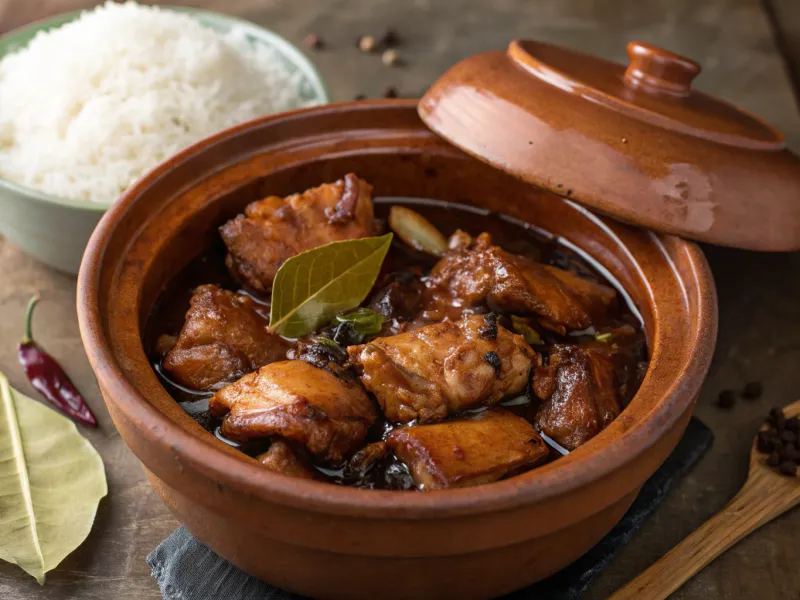
Soy sauce and garlic serve as the base for this Filipino comfort dish that appears on dinner tables across the archipelago. The chicken braises slowly in the tangy sauce until it becomes fork-tender. Spanish colonizers gave this cooking method its name, but Filipino families developed their own regional variations over generations. Each family guards their own recipe, adjusting the balance of soy sauce, garlic, and bay leaves. The long cooking process allows the chicken to absorb all the flavors while the sauce reduces to a rich, dark glaze. Steamed rice serves as the traditional accompaniment, soaking up the savory sauce that makes this dish a true Filipino classic.
